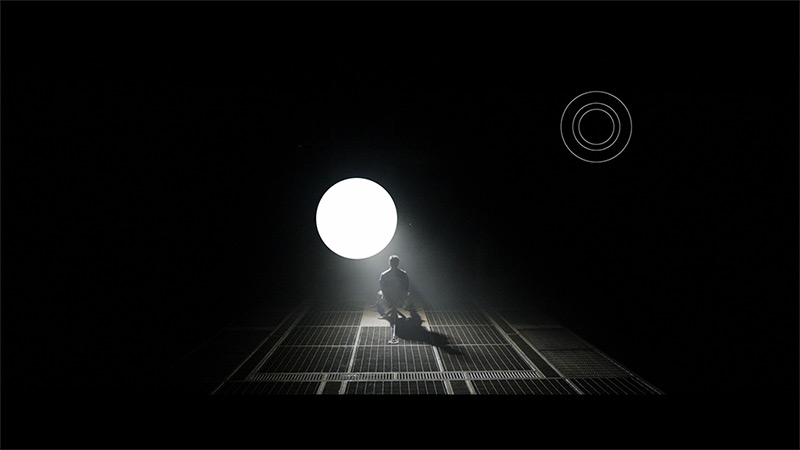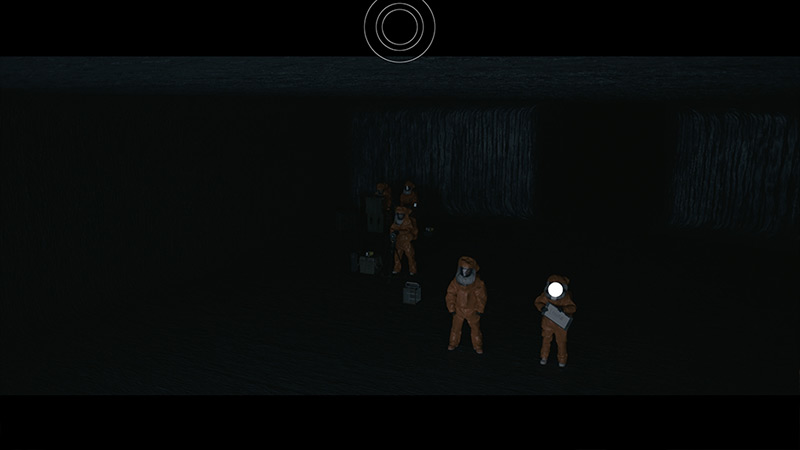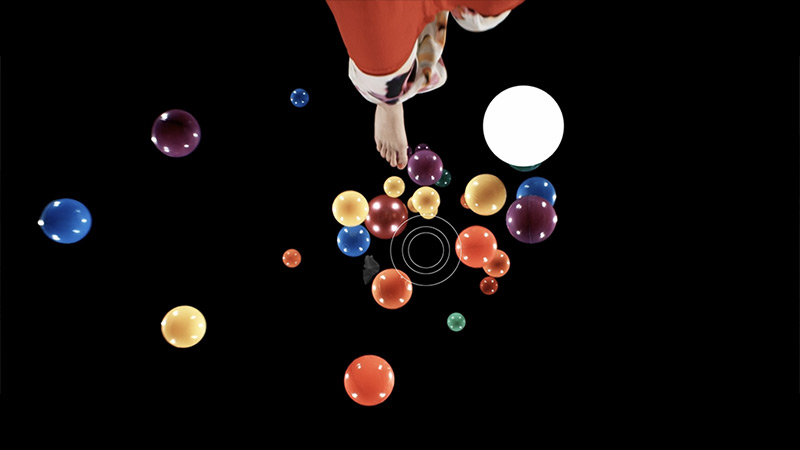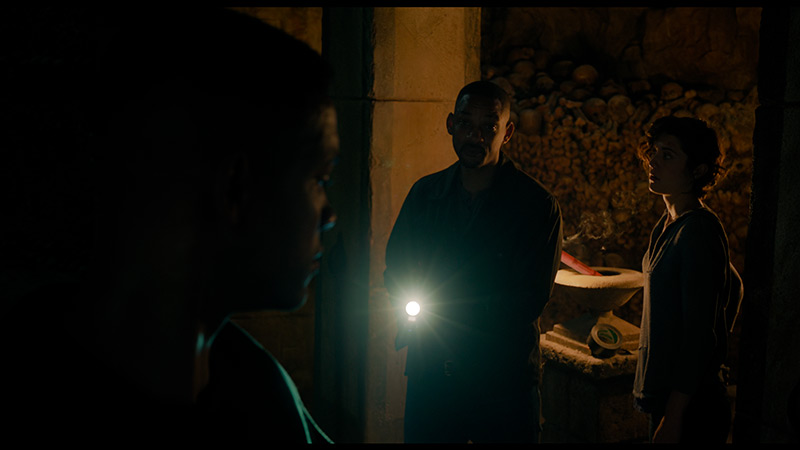Hisense U6NQ is a really interesting model from the Chinese manufacturer. It is the first MiniLED from the 2024 series and the only one with a 60 Hz refresh rate. Starting with picture quality, the MiniLED backlighting combined with a VA panel does its job – the contrast is good, and evening movie watching is a pleasure. The stable HDR effect, support for Dolby Vision and HDR10+, and solid colours make it handle most everyday tasks well. The Vidaa system operates smoothly – it's fast and intuitive, without any annoying stutters. It lacks a few popular apps like Spotify or Tidal, but most users will find what they need here, including the ability to record programs to a USB stick or external drive. And what about motion fluidity? It's quite decent. The option to choose between 4K at 60 Hz and Full HD at 120 Hz is a nice addition, especially if we're gaming on consoles that often don’t offer perfect 4K at 120 frames. Features such as VRR and ALLM further enhance the comfort of occasional gaming. However, there are some drawbacks. Motion blur issues are noticeable in dynamic scenes, and the absence of any function to reduce this effect doesn't help. In terms of picture quality, this TV places a very strong emphasis on brightness, which sometimes leads to situations where black takes on a slight blue tint in more challenging conditions. In short: Hisense U6NQ is a good choice for those looking for a TV that offers good picture quality and a user-friendly operating system. It's not without compromises, but for its price, it performs really solidly.
- Matching (Score)
- Our verdict
- TV appearance
- Where to buy
- Contrast and black detail
- HDR effect quality
- Factory color reproduction
- Color reproduction after calibration
- Smoothness of tonal transitions
- Image scaling and smoothness of tonal transitions
- Blur and motion smoothness
- Console compatibility and gaming features
- Input lag
- Compatibility with PC
- Viewing angles
- Daytime performance
- Panel details
- TV features
- Apps
- Playing files from USB
- Sound
Hisense U6NQ vs Panasonic Z85A
Direct comparison


Panel type: LCD VA
Resolution: 3840x2160
System: VIDAA
Model year: 2024
Complete the survey to find out the result

Panel type: WRGB OLED
Resolution: 3840x2160
System: Amazon FireTV
Model year: 2024
Complete the survey to find out the result

Overall rating
6.5
7.7
Movies and series in UHD quality
6.7
8.2
Classic TV, YouTube
6.5
8.7
Sports broadcasts (TV and apps)
5.0
8.5
Gaming on console
7.1
9.3
TV as a computer monitor
6.0
7.6
Watching in bright light
6.1
4.8
Utility functions
8.9
7.0
Apps
7.7
5.7
Sound quality
6.3
7.4
Complete the survey to find out what fits your preferences
Advantages
Good contrast and black levels in its price range
Supports multiple HDR formats - Dolby Vision, HDR 10+
Accurate colour reproduction out of the box
Flexible refresh rate - 4K@60Hz or FullHD@120Hz
Decent for occasional gaming - low input lag, ALLM, VRR
USB recording from built-in tuners
Perfect black and infinite contrast thanks to the WOLED panel
Great HDR quality with good coverage of the DCI-P3 colour gamut (98%)
Excellent picture quality after professional calibration
Full HDR package: HDR10, HDR10+, Dolby Vision
Low input lag: 5 ms (120 Hz) and 13 ms (60 Hz)
Support for ALLM, VRR, HGIG and Dolby Vision in games
Very good viewing angles
Smooth motion without blurring thanks to the 120 Hz OLED panel
Ability to record to USB and PiP function
AirPlay support
Pleasant sound quality with noticeable bass
Disadvantages
Missing a few apps in the VIDAA system - Spotify or Tidal
Issues with smudging
Dimming algorithms work moderately
SDR brightness at 300 nits – too low for brightly lit rooms
The Amazon Fire TV system has a limited number of apps
Some system functions are poorly translated into Polish
No support for external subtitles in USB player
No support for DTS:X audio on the television
Our verdict
The Panasonic Z85A is a basic OLED model from the Japanese manufacturer that fully utilises the potential of its panel. Thanks to OLED technology, we can expect phenomenal image quality in the highest resolution – perfect blacks, excellent contrast, and great HDR effect, especially after professional calibration. Additionally, it supports a full set of HDR formats, so we can easily choose a movie in the best possible quality. Although Panasonic is usually associated with home cinema equipment, the Z85A performs just as well with sports and games. The 120 Hz panel, support for VRR, ALLM, and even functional Dolby Vision in games ensure smooth gameplay without motion blur. The sound is also commendable – although there isn't an impressive soundbar like in the model Z95A, it is still quite pleasant with noticeable bass. Downsides? Primarily the Amazon Fire TV – the operating system that still has teething problems. Many popular apps are missing, and some features are either unavailable or poorly translated (e.g., lack of support for external subtitles). Another issue is the not-so-high brightness, typical of older WOLED panels – in a brightly lit room, this can be a problem. Despite these shortcomings, the Panasonic Z85A is a great option for movie enthusiasts and gamers looking for a versatile TV with outstanding image quality and solid sound. If we can overlook certain system limitations and the less-than-optimal brightness, the Z85A still has a lot to offer. However, if full comfort of use and a richer app ecosystem are crucial for us, then it's worth considering other OLED TVs from competitors as well.
TV appearance









Contrast and black detail
7/10
10/10
Local dimming function: Yes, number of zones: 160 (20 x 8)
Contrast:

Result
61,250:1

Result
13,650:1

Result
14,700:1

Result
11,150:1

Result
5,800:1

Result
∞:1

Result
∞:1

Result
∞:1

Result
∞:1

Result
∞:1
Halo effect and black detail visibility:


The tested 55-inch model is equipped with a VA panel, which provides deeper blacks compared to IPS/ADS panels. The use of this technology alone ensures that the contrast reaches a quite decent level. It’s also worth noting that the Hisense U6NQ, as a MiniLED television, features 160 local dimming zones in this version, which significantly improves the picture quality in many scenes. During tests, for instance in the film Oblivion, the television demonstrated good separation of the hologram lights, while the contrast remained at a satisfactory level. Unfortunately, in more demanding material, such as the Pioneer Kuro test pattern, a noticeable drop in quality was observed. In such scenes, the dimming zones did not function correctly, leading to a significant reduction in contrast. Similar issues occurred in scenes from the film Sicario 2, where the blooming effect was clearly visible, suggesting the television's difficulties with precise management of the backlight zones. Despite these drawbacks, the overall contrast level of the U6NQ can be considered solid, particularly in this price category. The television performs well in most standard scenes, and its capabilities in displaying blacks are better than those of models with other types of panels.
The Panasonic Z85A uses a WOLED panel, and that means one thing – perfect blacks and infinite contrast. Each pixel lights up and turns off independently, so there’s no smudging or halo effect around bright objects on the screen. Even in the most demanding scenes, the picture looks simply exemplary. In this regard, there’s no room for compromises, which are still present even in the most expensive LCD televisions. Here, Panasonic shines, utilizing organic technology supplied by LG Displays, and does so in truly impressive style.
HDR effect quality
5.6/10
6.5/10
Luminance measurements in HDR:

Result
443 nit

Result
426 nit

Result
505 nit

Result
442 nit

Result
448 nit

Result
812 nit

Result
775 nit

Result
812 nit

Result
808 nit

Result
390 nit
Scene from the movie “Pan” (about 2800 nits)


Scene from the movie “Billy Lynn” (about 1100 nits)


Static HDR10


Dynamic: Dolby Vision
Dynamic: Dolby Vision


HDR luminance chart:
Panasonic Z85A
HDR luminance
Luminance of RGB colors
Hisense U6NQ
HDR luminance
Hisense U6NQ offers a stable HDR effect, which is a rarity in TVs with local dimming. On most streaming platforms, in films and series recorded in 4K, the TV delivers consistent performance – in every tested scene, regardless of difficulty level, brightness is around 450 nits. This is a pleasant surprise, as many models in this class exhibit distinct differences – some scenes are well-lit, while others are heavily dimmed by dimming algorithms. However, the Hisense U6NQ prioritises maintaining higher brightness, which comes at the cost of blacks, as noted in the paragraph about the contrast test.
The HDR effect on the U6NQ is satisfying, offering a noticeable 'punch' of light in bright moments, although it's worth remembering the aforementioned blooming, which can be visible in challenging scenes. In terms of colour, the TV also performs adequately – the coverage of the DCI-P3 colour gamut is 89%, while BT.2020 is 71%. While these are not results that would impress more demanding users, for beginners in the world of high-quality materials, the U6NQ is a solid choice. As such, it presents an interesting option as an 'entry-level' TV for home cinema.
The Panasonic Z85A is an OLED television, so you can immediately expect excellent effects in films. And indeed – our tests showed that the WOLED panel can achieve around 800 nits of peak brightness in optimal conditions. This is a solid result, performing well in most demanding HDR scenes, allowing viewers to enjoy a dynamic and detailed picture. However, like every OLED, the Z85A also has its limits. In very bright scenes that fill the entire screen – like the final sequence from the movie The Meg – the television reduces brightness to around 400 nits. This is standard behaviour for this technology, so if someone plans to watch films in a heavily sunlit living room, it is worth keeping this in mind. The coverage of the DCI-P3 colour gamut at 98% also deserves high praise. This allows the television to reproduce a wide range of colours that stand out with vibrancy and depth, while details in HDR scenes are sharp and precise. In short – the Panasonic Z85A delivers a solid HDR effect that will satisfy any film enthusiast.
Factory color reproduction
8/10
8.4/10


Factory Mode
After calibration


Factory Mode
After calibration
Hisense U6NQ in Filmmaker mode offers really decent colour reproduction, although it's worth remembering that differences between individual units can be noticeable. The model we tested was pleasantly surprising, especially with HD content in SDR quality. The white balance was correct here, and errors in the range of 3–4 ΔE should be acceptable for the average viewer. The television performed slightly worse in reproducing colours with 4K HDR material. The dominance of blue tones led to unnatural cool shades on the Colour Checker chart, giving the image a "store" character. Combined with issues in brightness characteristics – gamma and EOTF curve caused some parts of the image to be too dark – the Filmmaker mode in this case loses some of its credibility. Although the factory settings of the tested unit deserve praise, particularly in SDR, there were still minor shortcomings that would require adjustments to fully utilise the television's capabilities.
The Panasonic Z85A offers many picture modes, but the Filmmaker mode definitely stands out from the rest. It's rare for a TV straight out of the box to be so well calibrated, and the unit we had the opportunity to test truly impressed us.
However, there were some minor shortcomings. In the SDR signal, we noticed a slight deficit of red and blue, which made the picture appear cooler than it should have been. This is particularly evident in the comparison image. In contrast, with 4K HDR material, the situation was the opposite – the surplus of red made the image seem warmer than intended by the creators. In terms of brightness characteristics (gamma) and maintaining an appropriate EOTF curve, it's hard to find faults. There are slight deviations, but they are so minimal that the average viewer is unlikely to notice them.
It's also worth highlighting that our observations relate to a specific unit of the TV. Two identical models may differ from each other due to natural production variances. Nevertheless, the piece we had in hand looks really solid and deserves praise. Now it's time for our calibration – we'll see if we can squeeze even more out of this screen!
Color reproduction after calibration
8.3/10
9.4/10




Although the factory settings of the Filmmaker mode on Hisense U6NQ were quite good, we decided to undertake calibration to fully assess the capabilities of this model. Only after such a procedure can one see how the television performs under ideal conditions. In the case of SDR content, which was already at a high level, we managed to further improve the white balance. However, the biggest change came from adjusting the brightness characteristics – gamma was optimised and no longer causes excessive darkening of the image, which improves its naturalness.
For 4K HDR content, calibration also yielded positive results. We eliminated the issue of blue dominance, which resulted in a more balanced and natural image. However, managing brightness in HDR materials remains a more complicated issue. The EOTF curve, although it had problems with image darkening in the 10–30% brightness range under laboratory conditions, reveals other shortcomings in real scenes. The television tends to overly brighten the smallest elements on the screen. As a result, this leads to noticeable halo effects around bright objects. This phenomenon, which we mentioned earlier in the context of contrast and HDR, arises from the technological limitations of the model and is often difficult to eliminate.
In short: although the Filmmaker mode with factory settings performed decently, calibration allowed us to achieve an even better effect – minor adjustments resulted in a more balanced image, particularly in HDR content. For users seeking the highest quality picture, calibration will be a beneficial step.
The Panasonic Z85A offers truly wide-ranging capabilities when it comes to picture settings, so we eagerly set about calibrating it. Although we mainly focused on adjusting the white balance, the final effect exceeded our expectations. Both HD and 4K HDR content now showcases nearly perfect colour reproduction, with minimal errors that are hard to catch with the naked eye. Well-calibrated TVs are a rarity, and we must admit – it’s truly satisfying. While the gamma and EOTF curve didn't require drastic adjustments, we managed to further stabilise their characteristics across the entire brightness scale. After calibration, the Panasonic Z85A is a true gem for home cinema enthusiasts. The picture is precise, the colours are natural, and every scene looks exactly as the director intended.
Smoothness of tonal transitions
7.8/10
7.5/10












The fluidity of tonal transitions in Hisense U6NQ is at a very good level. In most scenes, there are no obvious issues with colour blending, which provides a pleasant and cohesive visual experience. However, a more discerning eye may notice minor imperfections in specific cases, such as the scene with the blue sky in Kingsman or the final scene with the red background. These subtle shortcomings are, however, so minor that they shouldn't affect the image perception for most users. Overall, the television performs very well in this category.
The Panasonic Z85A handles tonal transition fluidity really well. Colours blend naturally together without noticeable disruptions or visible bands. However, in brighter scenes, such as the opening sequence in the film Kingsman, slight imperfections can be seen. This is typical for WOLED panels, which have their limitations compared to Samsung Display's QD-OLED designs due to the use of white sub-pixels. The differences aren’t colossal, but a discerning eye will catch them, especially in more demanding scenes with subtle colour gradients. Despite these minor reservations, the Z85A presents a level that will satisfy the overwhelming majority of users. Tonal transitions are smooth, and the image maintains consistency even in complex scenes. This is a solid result that will rarely cause issues in everyday viewing of movies or series.
Image scaling and smoothness of tonal transitions
5.6/10
7.4/10
Smooth transition function


Image without overscan on the SD signal


With high-quality materials like 4K, tonal transitions on U6NQ look really good – colours blend nicely and the image is consistent. Unfortunately, when we switch to lower resolution content, the television doesn’t offer any extra features that could improve this aspect. An example is the test with the light bulb, where it’s clearly visible that the television struggles with reproducing subtle tonal transitions.
On the other hand, digital processing performs quite well. The image looks lively, is pleasantly soft, and free from excessive artifacts. Moreover, thanks to the sharpness settings, it can be tailored to individual preferences – whether towards a softer or sharper image. Overall, while upscaling lower quality materials could be better, the television handles image processing well.
Now that we know how the Panasonic Z85A handles tonal transitions in 4K material, it’s time to take a look at its "Gradation Smoothing" function. It works, but unfortunately not entirely effectively. Regardless of the chosen value – whether it’s low, medium, or high level – we couldn’t achieve perfectly smooth tonal transitions in our test sequence. We recommend setting this function to an intermediate level. While this may slightly blur fine details, at least it avoids the problem of losing film grain, which can be crucial for many viewers when watching classic productions.
When it comes to image scaling, the TV performs quite well. It’s noticeable that the image is slightly sharpened, and thin lines can sometimes appear a bit jagged. However, this is standard for most TVs, and fortunately, it can be adjusted using the sharpness slider. This gives us full control – we can achieve a more vivid, blurred image or a clearer one, although it may appear more "harsh" and artificially sharp. It all depends on the user's preferences and the type of content we’re watching. Overall, the scaling is at a solid level and should satisfy most users who are using lower resolution material.
Blur and motion smoothness
3.4/10
8.5/10


Blur (native resolution, maximum refresh rate):






Hisense U6NQ offers native refresh rates of 60 Hz at a 4K resolution, but the manufacturer has added a feature that allows for an increase in refresh rate to 120 Hz, at the cost of reducing the resolution to Full HD. This is a solution we have previously seen in TCL televisions, such as C655 or C655 PRO. This gives the user the option – higher motion fluidity or full resolution. This makes sense, especially considering that many new generation console games do not achieve full performance in 4K at 120 Hz.
When it comes to movies, the television is equipped with a motion smoother feature, which allows you to adjust the motion characteristics to your own preferences. This enables a more cinematic effect or increases fluidity in dynamic scenes. Overall, Hisense U6NQ offers sensible solutions in terms of motion fluidity that should satisfy both gamers and movie enthusiasts.
The Panasonic Z85A features a 120 Hz panel, which will surely please both gamers and sports fans. Sure, it’s not 144 Hz like some gaming TVs, but in practice, the difference is really hard to notice. In games, the picture is stable and sharp, and during fast action, there’s no sign of any blurring. The same goes for sports – a player’s quick run or a car’s dynamic maneuver looks smooth and natural. The TV also has an “Intelligent Frame Creation” feature, which is a motion smoother. There are two sliders here – one controls motion blur reduction, while the other adjusts motion smoothness. With these, you can tailor the picture to your own preferences – whether you prefer a more cinematic effect with gentle transitions between frames or a maximally smooth image ideal for watching sport.
Console compatibility and gaming features
6.3/10
10/10
- ALLM
- VRR
- VRR range48 - 60Hz40 - 120Hz
- Dolby Vision Game Mode
- Correct implementation of HGIG
- 1080p@120Hz
- 1440p@120Hz
- 4K@120Hz
- Game bar








Hisense U6NQ gives the option to choose between 4K at 60 Hz and Full HD with 120 Hz refresh rate. This solution may appeal to gamers who want to decide what is more important to them – higher resolution or smoothness. The TV supports features like ALLM and VRR, which help in providing smoother gameplay. A nice addition is the GameBar – an easy-to-use panel that allows quick adjustments to picture settings and checking statistics. We also find the Dolby Vision Game mode here, which operates with low input lag, a big plus for console enthusiasts. Unfortunately, it lacks HGiG, which could further improve HDR quality in games. Nevertheless, the Hisense U6NQ performs quite well as a gaming TV, especially for those who play occasionally and do not require the highest refresh rate in 4K. It is a solid choice for less demanding users.
Panasonic is mainly associated with home cinema televisions, but the Z85A shows that it can also step into the gaming world with a truly strong punch. It's a device that can easily be called a gaming beast – it has everything needed for comfortable gameplay.
Even though it has only two HDMI 2.1 ports, both operate at full bandwidth, so we can easily connect both a next-gen console and a gaming PC. All the key features are supported: ALLM automatically switches the television into game mode, VRR provides smooth visuals without stuttering and tearing, and with properly implemented HGIG and Dolby Vision, HDR games look really good – colours are vivid, details are sharp, and dark scenes are clear. We also find a Game Bar in the form of a transparent, circular menu. It may not look as impressive as the competition's, but it's intuitive and includes all the most important settings we’d want at hand during gameplay.
In summary – the Panasonic Z85A is a device that truly surprises with its gaming capabilities. It's a television where both console gamers and PC gamers will feel at home. It's smooth, dynamic, and just good.
Input lag
9.9/10
10/10
SDR
HDR
Dolby Vision
The Hisense U6NQ TV offers a very low input lag of 14 ms, making it a good choice for gamers, especially those who prefer dynamic titles. It's also worth noting that the Dolby Vision mode in games works really well here. This is a pleasant surprise, as on many other TVs, this HDR mode performs only mediocrely.
Since the Panasonic Z85A has also been designed with gamers in mind, the input lag had to be refined. And indeed – the results are really excellent. At 120 Hz, the lag is just 5 ms, and at 60 Hz it's 13 ms. These are values that will satisfy even the most demanding gamers, whether we're talking about fast-paced shooters or precise fighting games. The responses to our movements on the controller are practically instantaneous, and the gameplay is smooth and responsive. Importantly, the Dolby Vision mode also works perfectly here. Just a few years ago, using Dolby Vision in games often came with high input lag, but in the Z85A, this problem has been effectively eliminated.
Compatibility with PC
6/10
7.6/10


As a screen for working with a computer, Hisense U6NQ performs quite decently. The fonts are readable enough, so it's perfectly adequate for everyday writing or browsing the internet.
When it comes to gaming, the TV supports G-Sync, but only at 4K resolution at 60 Hz. Unfortunately, if someone was hoping for 120 Hz smoothness in 1080p with G-Sync enabled, they might be disappointed – this TV does not offer that. It's a bit of a shame, as it could have been a good option for gamers who prefer smoothness over resolution.
Using the Panasonic Z85A as a computer monitor performs really well. The text is readable and clear, making web browsing or working with documents not a major issue. However, one must keep in mind certain limitations of the WOLED panel – the characteristic way of displaying fonts may be bothersome for more demanding users, especially those who spend long hours working with text. In terms of gaming on PC, the television performs just as well as it does with consoles. Low input lag, 120 Hz refresh rate, and proper implementation of G-Sync and FreeSync ensure a smooth and responsive image without annoying stutters or tearing.
Viewing angles
3/10
7.4/10
The viewing angles on the Hisense U6NQ are average, which is typical for VA panels. Thanks to this technology, we gain better contrast and deeper blacks, but at the expense of image visibility at wider angles. It’s a classic compromise – in TVs with IPS panels, the situation is reversed, where the viewing angles are wider, but the contrast and blacks suffer in quality.
The viewing angles on the Panasonic Z85A are really good – after all, it’s OLED. Whether we’re looking at the screen straight on or at a steep angle, the colours remain vibrant, and the contrast hardly loses quality. Of course, the Z85A falls slightly behind TVs with MLA micro-lenses or Samsung's QD-OLED panels, which currently set the highest standard in this respect. However, the differences are subtle enough that most users won’t notice them during regular viewing.
Daytime performance
6.1/10
4.8/10




Panel brightness
Average luminance SDR
Panasonic Z85A: 286 cd/m2
Hisense U6NQ: 488 cd/m2
Hisense U6NQ performs well in bright rooms thanks to the satin finish on the panel, which effectively reduces reflections. The average brightness on SDR content, such as standard television, is 488 cd/m², which is more than sufficient for comfortable viewing even in slightly challenging lighting conditions.
The Panasonic Z85A leaves a bit to be desired during the day. The panel, although satin finish, mediocrely suppresses reflections, which can be noticeable in bright rooms. The reflections are not excessively visible, but there is one catch – they take on a bluish hue. In some situations, especially in strong daylight, this can be slightly annoying and distract from the content on the screen. On top of that, the maximum brightness is just under 280 cd/m². That’s simply not enough to comfortably watch TV in a heavily sunlit room. If you plan to watch in the middle of a sunny day, you’ll need to close the windows to ensure the picture looks good.
Panel details
Subpixel Structure:


Panel uniformity and thermal imaging:


TV features
8.9/10
7/10
- HDMI inputs3 x HDMI 2.0, 0 x HDMI 2.12 x HDMI 2.0, 2 x HDMI 2.1 48Gbps
- Other inputsRCA (Chinch)
- OutputsToslink (Optical audio), eARC (HDMI), ARC (HDMI), Mini-Jack (Headphones)Toslink (Optical audio), eARC (HDMI), ARC (HDMI), Mini-Jack (Headphones)
- Network InterfacesWi-Fi 2.4GHz, Wi-Fi 5GHz, Ethernet (LAN) 100MbpsWi-Fi 2.4GHz, Wi-Fi 5GHz, Ethernet (LAN) 100Mbps
- TV receptionDVB-T, DVB-T2, DVB-S, DVB-S2, DVB-CDVB-T, DVB-T2, DVB-S, DVB-S2, DVB-C
Classic features:
- Recording to USB (terrestrial TV)
- Recording programming
- Picture in Picture (PiP)
- RF remote control (no need to aim at the screen)
- Backlit remote control
- Teletext
- Audio only mode
- Bluetooth headphones support
- Simultaneous Bluetooth headphones & TV audio
Smart features:
- AirPlay
- Screen mirroring (Windows Miracast)
- Voice search
- Voice search in native language
- Ability to connect a keyboard and mouse




The Vidaa system that powers the Hisense U6NQ is undoubtedly one of its stronger features. It’s quick, operates smoothly, and most importantly – it doesn't suffer from annoying stutters that can be frustrating in other TVs. It’s great that you can use voice search in Polish, which significantly eases operation. There are plenty of apps available, but unfortunately, there’s a lack of music apps like Spotify or Tidal. It’s a shame because a TV is not just for movies and series – some people would probably love to use it for listening to music too.
Additional features include the ability to record TV programs onto a USB drive or external hard drive. There's also AirPlay and Miracast, so it’s easy to stream content from a smartphone. The built-in Bluetooth is handy too, allowing you to connect headphones, a mouse, or a keyboard. The only thing that's really missing here is the PiP (picture-in-picture) feature. If it were added, the TV would be complete in terms of functions. Nevertheless, the Hisense U6NQ offers plenty and will comfortably satisfy most users.
The operating system in the Panasonic Z85A is Amazon Fire TV, which is still a relatively new solution in the Australian market. Until now, we mainly associated it with portable smart devices, and now it is also arriving on televisions – similar to the flagship model Z95A.
On the plus side, the system operates smoothly and responsively. It is also quite intuitive, so navigation poses no major problems. Unfortunately, when it comes to the availability of applications, it's somewhat lacking. While the Amazon store does have icons for popular services like SkyShowtime, Rakuten, or Viaplay, they cannot be downloaded. This is a significant disadvantage for those who use these platforms regularly. Additionally, some functions are poorly translated, meaning that in certain areas, you have to guess what they are referring to. However, we believe that these are just growing pains and that over time they will be improved – both in terms of translations and application availability.
As for user features, things are much better. The television supports USB recording and the PiP (picture-in-picture) function. There is also support for AirPlay, which will certainly please users of Apple devices. It also has Bluetooth, but unfortunately, you cannot connect headphones to it – it only works with a keyboard or other controlling devices. Fortunately, you can connect headphones or a home theatre system via wired connection, which resolves this issue.
In summary – the Panasonic Z85A offers a solid set of user features that will perform well in everyday use. The Amazon Fire TV system is a step in the right direction, especially when compared to Panasonic's old system. However, at this time, it is difficult to praise it unequivocally. There is potential, but the manufacturer still has a lot of work ahead to ensure everything functions as it should.
Playing files from USB
8.5/10
3.1/10
Supported photo formats:
Maximum photo resolution:


The built-in file player in Hisense U6NQ should satisfy most users. It supports Polish characters and allows for easy editing of displayed subtitles, which is a big plus. Unfortunately, it lacks support for the AV1 codec, which may be an issue for those wanting to play newer video formats. However, for less demanding users, the player's features will be fully adequate.
In terms of playback of files from USB, the Panasonic Z85A performs rather mediocrely. The built-in media player does handle most popular video formats, but it has one significant drawback – it does not support external subtitles. So, if we have older films on our drive or USB stick with separate subtitle files, we have to reckon with the fact that the television simply won't display them. This is quite a downside, especially for those who rely on their own media library rather than streaming services. Of course, this issue can be circumvented by using an external media player (e.g. via a console or Smart TV box), but it's an extra step that could be avoided if the built-in application were better developed.
Apps
7.7/10
5.7/10














































Sound
6.3/10
7.4/10
- Maximum volume--
- Dolby Digital Plus 7.1
- Dolby True HD 7.1
- Dolby Atmos in Dolby Digital Plus (JOC)
- Dolby Atmos in Dolby True HD
- DTS:X in DTS-HD MA
- DTS-HD Master Audio
Hisense U6NQ is equipped with a standard set of speakers rated at 20 W, which is typical for this class of televisions. The sound is decent, but nothing stands out particularly. However, it is a plus that it supports all popular audio codecs, including DTS and Dolby Atmos. This way, we can easily connect a home theatre or soundbar, achieving significantly better audio experiences than from the built-in speakers.
In terms of sound, the Panasonic Z85A is pleasantly surprising. The television delivers enjoyable and clear audio, and can generate noticeable bass that adds depth to both movies and music. The surround effect is also quite well reproduced, making watching films or playing games more immersive. Unfortunately, there is one “but”. The television does not support the DTS:X format, which is quite popular among more advanced home theatre systems. So, if we plan to use this audio standard, it will be necessary to connect the audio equipment first to the amplifier or soundbar, and only then to the television.
